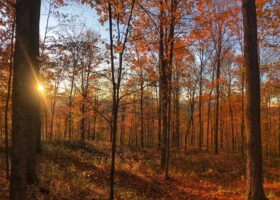
Field Guide to October 2024
The month of October reminds us of the cyclical nature of life. Like spring, autumn is a season of change. The forested hills fade from summer emerald to a watercolor painting of red and gold and brown. Here’s your field guide to some moments that you might not otherwise notice during these few precious weeks that feature colored hills beneath a deep blue sky.
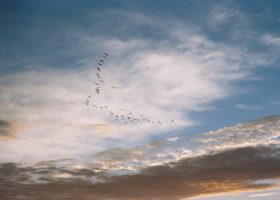
Field Guide to September 2024
It can happen almost anywhere. On a cool, foggy morning, for example, when fall warblers drop from their nocturnal, migratory flights into your backyard, and clusters of Common Green Darners congregate on a nearby riverbank. Or along a mudflat some afternoon when you notice a Spotted Sandpiper teetering and then darting after prey. Or on some wooded trail when you spot the first ruby red leaves among late-summer’s faded green. Here is your field guide to life slowing down and on the move in September.
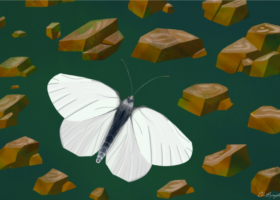
Searching for Butterflies: The West Virginia White
As VCE’s Spatial Science Intern, I spent my summer working with community science observations from several platforms, such as eButterfly and iNaturalist, to create a species distribution model for the West Virginia White in the state. This model incorporated bioclimatic variables and host-plant distributions to reveal areas within Vermont that may be suitable for these butterflies today and into the future.
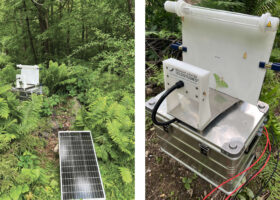
Building an Automated Moth Monitoring Network
How are moth populations faring in Vermont? Except for a few species, no one really knows. A few years ago, VAL teamed up with community scientists, biologists, engineers, and computer scientists from around the world to change that. Now, we are poised to understand moths like never before.
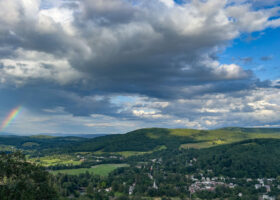
Field Guide to July 2024
The dawn bird chorus now fades from northern woodlands as the hills erupt in the sparkle and drama of summer insects. Dragonflies dart through fields and along pond edges. Moths and butterflies in all shapes and hues flit across the sun-washed landscape. In July, Vermont’s hills and valleys pulse with the rhythm of wildlife antics. Here’s a guide to some of the splendor.
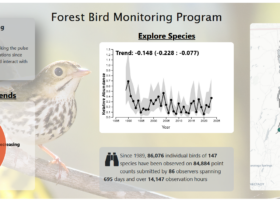
Forest Bird Monitoring Data Dashboard Goes Live
For over 30 years, VCE has coordinated the Vermont Forest Bird Monitoring Program to track the long-term population trends of interior forest birds. The backbone of this project is the dedicated corps of volunteer birders. The data these hardy birders collect are invaluable in tracking the status of forest songbirds. Now, the FBMP has a Data Dashboard where anyone can explore and interact with FBMP data and view up-to-date results.
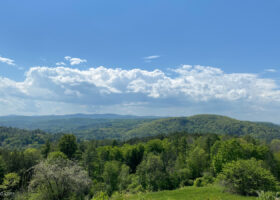
Field Guide to June 2024
Here in Vermont, we dream of June during the darkest days of January. Verdant wooded hillsides glowing brightly under a robin egg sky. Warm afternoon breezes roll through the valleys as we lounge by the clear waters of a cold river. Choruses of birds wake us each morning. The smell of freshly cut grass wafts through the window. Enjoy this guide to some of the month’s delights as the dream of June comes true.
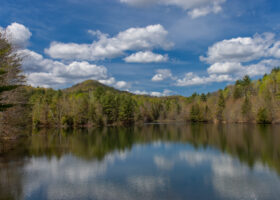
Field Guide to May 2024
The month of May is a show-off. Birds arrive on southern winds and liven the dawn with their chorus. Trees flower, and leaves burst from long-dormant buds. As pools and lakes awaken with new life, woodland wildflowers jump out of the ground to attract the attention of butterflies. Here’s your monthly guide to a month that shouts of life and rejuvenation.
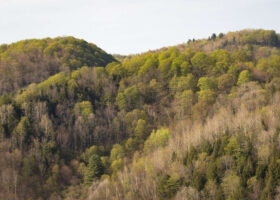
Field Guide to April 2024
As grays and browns permeate the muddy landscape of late spring, summer colors lie just beneath the surface, almost ready to bloom. Strolling through your neighborhood or favorite woodland in April, you may begin to notice flashy dapples of the season’s first wildflowers. The trees around you will start to reverberate with birdsong while the ponds echo with choruses of Wood Frogs and Spring Peepers. If you’re lucky, you may even catch the buzz of an early-season bee as it forages. Here’s our guide to some of the new life bursting forth this month.
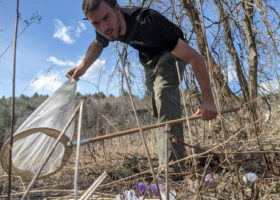
VCE is Abuzz with High-impact Bee Work
For over a decade, VCE has been positively buzzing with activity, surveying far and wide for bee species across the state. Our efforts kicked off with the Bumblebee Atlas in 2012 and reached a crescendo in 2022 with the State of Vermont’s Wild Bees report. Little did we know that this would start a multi-state ripple of pollinator work.
